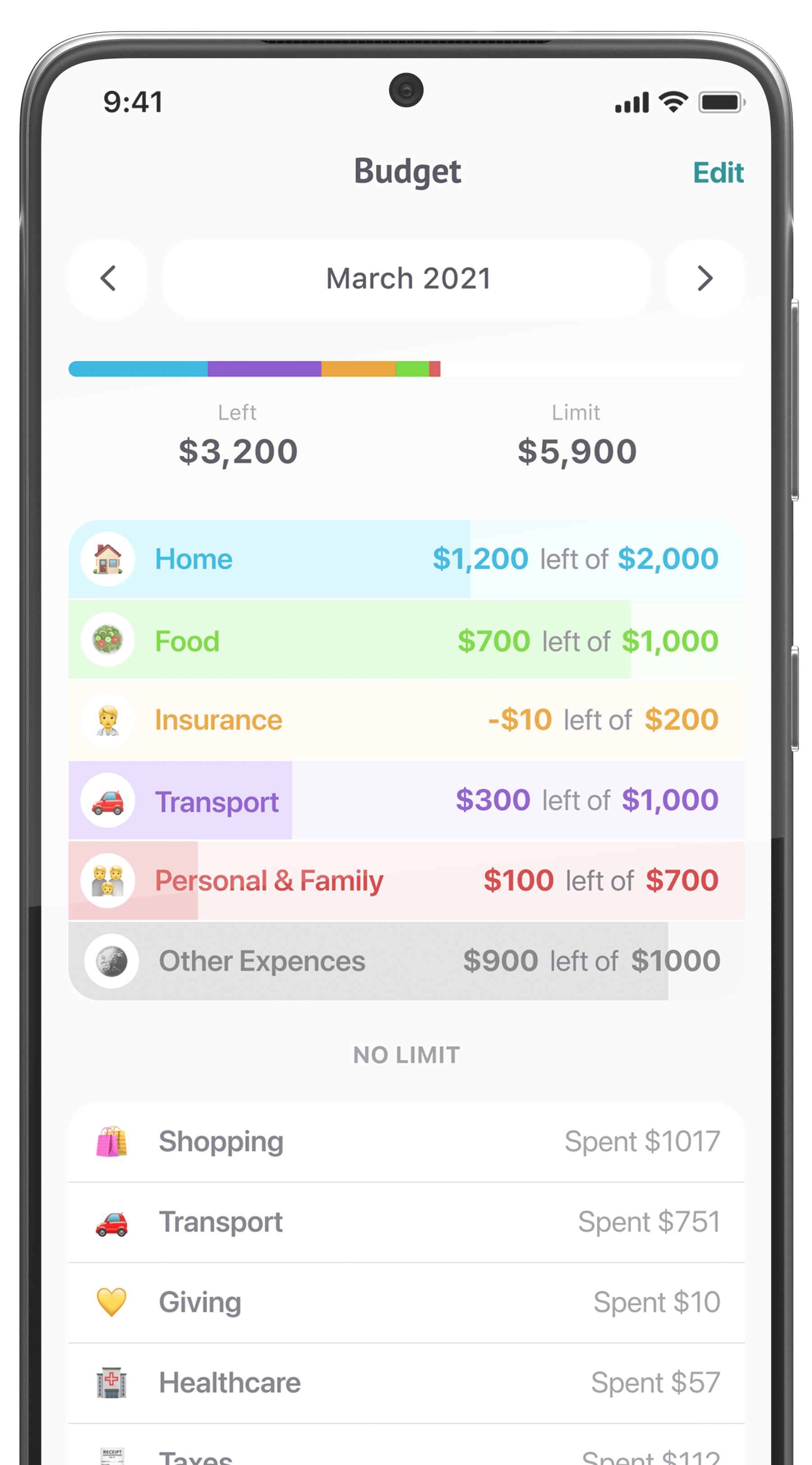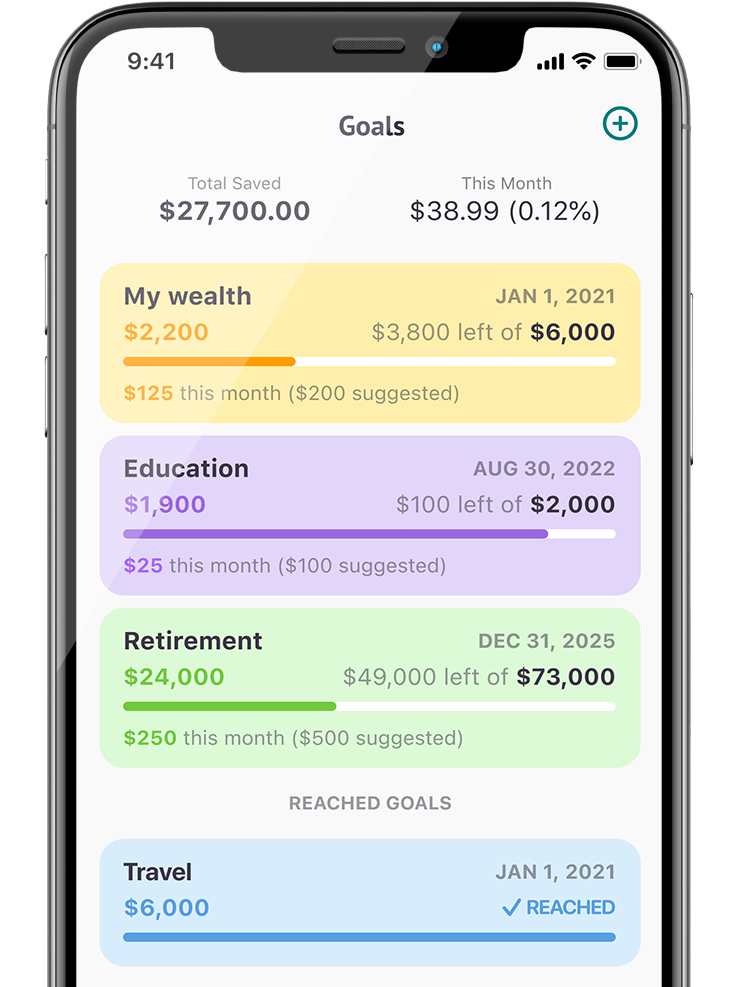Your money shouldn’t just be sitting around in checking and savings: it should be working for you. A savings account might protect you against inflation, but to actually profit from your long-term savings you’ll need an investment portfolio. Investing in stocks and bonds isn’t as risky as it sounds if it’s done correctly, and modern investment products have made it easier than ever to get started on a good portfolio. Whether you’ve already got money spread through the markets or you’re just thinking about getting started, it’s important to understand what goes into a portfolio, how to assess risk, and what tools are available to you.
What’s in an investment portfolio?
Technically, everything you own is your investment portfolio. Whether it’s cash, real estate, stocks, or even cryptocurrencies if it’s worth money, it’s part of your portfolio. More specifically, though, most people think of their investment portfolio as an asset that they have acquired that they hope will be worth more in the future, especially financial products. Most portfolios include a mix of assets to avoid the possibility of losing too much value if anyone part takes a big hit. The most common components of a portfolio are:
Cash and cash equivalents: checking, savings, money market, et cetera
While technically part of your overall financial portfolio, checking accounts are for spending money and savings accounts are for emergency funds. Neither one is typically used as a long-term investment instrument.
- Safety: High (FDIC-insured)
- Returns: Low
Certificates of deposit (CDs)
CDs are safe in that they are FDIC-insured, and they typically provide steady returns at higher rates than savings accounts. They’re often used as medium-term savings instruments since they basically lock your money up for a few months or years.
- Safety: High (FDIC-insured)
- Returns: Generally higher than checking/savings and lower than riskier products
Bonds (debt)
Whereas a stock is a piece of a company, a bond is typically a company (or government) that borrows money from you now, pays you a percentage every year (the coupon), and returns your money in full at some point in the future. These are typically quite stable and safe (but not insured), and provide decent returns.
- Safety: Medium-high (depends on default risk)
- Returns: Generally higher than CDs and lower than stocks
Stocks (equity):
These are shares in companies. If you buy it, you have a small ownership stake in a company, and the value of that will go up and down depending on the company’s performance and the market. Stocks are commonly included in portfolios as either individual shares or as part of a mutual fund or ETF. These bundle together many different companies into a single product, automatically diversifying your investments and making them more stable.
- Safety: Medium, since stocks are not insured and even wise investors can run into bad luck. Returns: Historically, investors have enjoyed long-term annual returns averaging about 10%
Commodities/real estate
Commodities are “goods”—actual products, like gold, oil, livestock, and even energy. They can be very volatile, however—even more so than the shares of the companies that produce them. Average investors typically buy these through ETFs and mutual funds, which generally provide safe mixes, but getting directly into commodities should mostly be left to advanced investors. Roughly the same can be said of real estate.
- Safety: Low, since the markets are very volatile and can be complex.
- Returns: Potentially large, potentially negative.
Cryptocurrencies:
If you’re a tech-savvy investor with high-risk tolerance, this very new asset class can be a good addition to your portfolio—though it should probably be a very small percentage. These are essentially currency systems based on distributed ledger technology, meaning transactions are recorded by computer systems all over the world rather than a single centralized actor. There’s a lot of growth potential here, but also a lot of instability.
- Safety: Low, as the space is new, relatively untested, and quite technical
- Returns: Could go to the moon, could go to zero. Don’t buy that Lambo just yet.
Asset allocation: understanding asset class risk
You may have heard people argue that investing in the stock market is basically gambling, and that’s partially true: there are so many variables that go into determining stock prices that investing in any one asset carries some risk. That’s why how you divide up the “pie” of your portfolio really matters. There are a lot of different schools of thought on this, but they tend to be in agreement on a few key points.
First, the risk carried by each type of asset is roughly as follows, in order of least to most risky:
- Cash and cash equivalents (typically only hurt by inflation)
- Certificates of deposit (CDs) and other insured deposits
- Bonds (though they also vary in risk depending on bond type and issuer)
- Stocks (subject to the whims of the market)
- Commodities (famously volatile)
- Cryptocurrencies (new, relatively untested, and so far very volatile)
Second, the average individual’s portfolio should contain at least a mix of stocks and bonds, possibly including small percentages of commodities and cryptocurrencies if the investor or financial manager wants to make that call. No one can quite agree on exactly what this mix should look like, but most long-term investment strategies ultimately amount to the same thing: invest in a diverse mix of stocks and bonds, probably using index funds and ETFs (Exchange-Traded Funds).
You can find many tools that help you measure your risk tolerance, set goals, and formulate strategies, but the common wisdom is roughly this: the longer you plan to have your money in savings, the higher your risk tolerance is. The higher your risk tolerance is, the more money you should put in stocks (and possibly other risky instruments). The stock market tends to go up over the long-term, but might have short-term losses, while bonds almost always payout, but at lower returns than stocks have tended to yield
To give you an idea, a simple, high-risk portfolio suitable for a long-term investor might be as high as 90% stocks and 10% bonds. If you’re closer to retirement, you might hold 40% stocks and 60% bonds, since (hopefully) you’ve been adjusting your asset allocation to include fewer stocks and more bonds every year. These numbers are just an example, of course, and won’t work for everyone. There are lots of tools and resources online, including Finmatex, that can direct you towards good sources of portfolio advice.
Asset allocation: diversification
If you’re an intermediate to an advanced investor, you may have an opinion about the percentage of international small-cap equity assets in your portfolio. If you don’t understand what that means, don’t worry: all you need to know is that you shouldn’t be putting all your eggs in one basket. Don’t buy exclusively technology stocks and U.S government bonds, for example, since if either of those sectors does poorly, it might wipe out your savings. Ideally, you’ll own instruments from most major sectors of the economy and have both domestic and international exposure.
Index funds, ETFs, and mutual funds make it easy to have a diverse portfolio without needing to tinker with it on your own. The exact differences between them get a little technical, but buying a few of the big ones will cover most of your bases. A fund that tracks the value of companies on the S&P 500 list, for example, allows you to buy a share in 500 different companies at once. Add a bond market fund, some international funds, and a few more if you feel like doing some research, and your portfolio will be pretty much complete. Make sure you do some research before buying or signing up since some funds/ETFs have higher costs than others.
So where does my portfolio live, exactly?
Talking about stocks, bonds, and funds is all fine, but to actually get that stuff, you’ll need an investment account for your portfolio. These are a whole topic unto themselves, but at a basic level, you just need a brokerage account. If you’re saving for retirement, a Roth or a traditional IRA is a good start, but you could also use an employer-sponsored retirement plan, like a 401(k). Taxable brokerage accounts are also an option: they let you invest without any of the restrictions that come with other types of investment accounts. As the name implies, though, they also miss out on the tax benefits that other accounts offer.
You can be an investor
Investing is an essential part of saving for the future. Luckily, it’s only getting easier over time. You don’t really have to understand financial markets yourself since a lot of people have already done the work for you. Apps like Finmatex can guide you through making financial decisions and help you find good options, and there are plenty of banks and institutions that are designing easy-to-understand, user-friendly products that require almost no work from the user at all. Don’t be intimidated by buzzwords: can be accessible for anyone.













